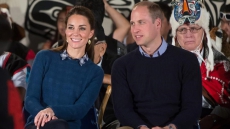Prime Minister Narendra Modi on Wednesday paid tribute to Bhagat Singh on his 109th birth anniversary.
"I bow to the courageous Shaheed Bhagat Singh on his birth anniversary. He has left an indelible mark on India's history through his bravery," Modi wrote on twitter.
The revolutionary freedom fighter, Bhagat Singh, was born in Banga village of Faisalabad district (previously called Lyallpur) in the Punjab province (now in Pakistan) in 1907.
I bow to the courageous Shaheed Bhagat Singh on his birth anniversary. He has left an indelible mark on India's history through his bravery.
— Narendra Modi (@narendramodi) September 28, 2016
He was hanged in Lahore jail at the age of 23, along with Shivaram Hari Rajguru and Sukhdev Thapar on March 23, 1931.
Several other dignitaries and celebrities paid tribute to the great man, who was born in 1907 in Banga village in modern-day Pakistani Punjab, and hanged on March 23, 1931 in Lahore - at the age of 23.
Sept. 28, 1907. The birth date of Shaheed Bhagat Singh Ji. May he forever inspire courage & true patriotism in Indian hearts and minds.
— VISHAL DADLANI (@VishalDadlani) September 27, 2016
Musician Vishal Dadlani, of Indian Idol fame, expressed hope that Singh's example would continue to inspire "true patriotism."
To my only idol, my only mentor, my only hero Bhagat Singh....I bow to ur courage of conviction n wish I had even a fraction of that!
— Gautam Gambhir (@GautamGambhir) September 28, 2016
Cricketer Gautam Gambhir's message was especially laudatory. He called Singh his "only mentor," and said he hoped to have "even a fraction" of his courage.
Zindagi to apne dum pe Jee jaati hai,
— Shikhar Dhawan (@SDhawan25) September 28, 2016
Dusro ke kandho pe to janaze uthte hai. #BhagatSingh pic.twitter.com/Wj79c703hD
Here's what his Delhi and India teammate Shikhar Dhawan had to say.
Happy birthday to the truest hero - #BhagatSingh 'it is easy to kill individuals but you can't kill the ideas' ✨#InquilabZindabad pic.twitter.com/kldAACyfg6
— Rupinder Kaur (@RupinderKW) September 28, 2016
LEGACY CONTINUES TO GROW STRONGER
Largely inspired by the Marxist-socialist ideology, Bhagat Singh’s idea of the freedom struggle was beyond the mere objective of freeing India. He was interested in examining the very roots of imperialism that led to the process of enslaving other nations.
After the withdrawal of the Non-cooperation Movement in 1922, Bhagat Singh’s ideology of revolutionary struggle received an impetus from the disillusioned youth across the country. Strongly opposing the Gandhian form of the independence movement, the thoughts and methods of Bhagat Singh have continued to have a large impact upon the youth.

Over the years Bhagat Singh has become an icon for the youth. No narrative on freedom or protest against societal injustices takes place without reference to the legend of Bhagat Singh.
SHAHEED BHAGAT SINGH NEVER WORE BASANTI TURBAN: RESEARCHER
Nowadays it is not unusual to find pictures of the martyr sporting a yellow or orange turban.
However, according to Professor Chaman Lal, a research scholar who has numerous books on the martyr to his credit, said there were no photographs of Bhagat Singh sporting a yellow or an orange turban.

“We had clarified many times that Bhagat Singh never wore any basanti or kesari turban. It is all imagination. We have only four original photographs of him. In one he is sitting with open hair in jail, another shows him in a hat and rest in a white turban. Distorted pictures show him in yellow or orange turbans or even with a weapon in hand. Some of them are paintings too. Political parties should talk about his ideology and discuss it with youths instead of using his name for their own benefits,” said Prof Lal.
The AAP is popularising the yellow (basanti) turbans associating the color with the martyr. Sangrur MP Bhagwant Mann who himself wears a such a turban, has said many times that is is part of the martyr’s legacy and that the AAP vowed to follow it and bring a ‘kranti’ (revolution) in Punjab. The party even issued directions for their Sikh volunteers in Canada to wear basanti turbans.
WHAT BHAGAT SINGH WROTE ON BOSE & NEHRU
Bhagat Singh's article, “Naye Netaon ke Alag Alag Vichar”, (Different Thoughts of New Leaders.) was published in Kirti magazine in July 1928. The magazine had a readership in Punjab and North India.
In pre-Independence days, the Kirti Kisan Party was operating in the same area. The party was leftist, with close relations with the Communist Party. When Subhas Babu went to Germany via Afghanistan, he received the assistance of one Bhagat Ram Talwar, who was an active member of the Kirti Party.

Bhagat Singh was a radical. He worked for the upliftment of peasants and workers. He was an avid reader. The available list of books he read while in detention is simply amazing. He had written several articles, which are the testimony to his lucid writing and thoughts.
In “Naye Netaon ke Alag Alag Vichar”, Bhagat Singh wrote that the non-cooperation agitation of 1920 had failed, and by 1928 there was resurrection. New leaders were coming forward.
Among them were Subhas Chandra Bose and Pandit Jawaharlal Nehru, both true patriots and ardent supporters of Independence for India. Bhagat Singh began by appraising the thoughts of some earlier leaders before Bose and Nehru.

Thus, beginning with Sadhu Wasvani, he noted that Wasvani had no special place in the then political sphere, eulogy of the ancient times was his only programme; but he wielded influence on the minds of the youths. Bharat Youth Mandal was his creation. He wrote that Wasvani's thoughts could be summed up in one sentence, “Go back to the vedas”.
The same was the message of the Arya Samaj. Wasvani had said that because of the sages we have achieved so much progress that there would be no addition henceforward. He believed that the celestial power (shakti) was the need of the hour. Our nationalist movement must become a purifying mass movement; people should go to the villages to give help and medicine to the poor, so as to avert the class struggle.

Bhagat Singh underlines Nehru's observation that we should not accept tales from religious books, if they do not stand the test of reason. To Bhagat Singh, Nehru was radical and desired reformation in the society, while Subhas Babu wanted the status quo and believed in everything ancient, whereas Nehru wanted a revolt against it.
Nehru said those who believe that they could revive whatever existed a hundred years back, Nehru said, “I want to tell them that it was impossible. The world in our imagination might be still but the real world is not still”.

Bhagat Singh then appealed to the young generation of Punjab not to be guided by emotion but by reason. He noted that Punjabis are emotional, they get excited instantly and then calm down quickly. He wanted to impress on the minds of the Punjab's youth that they needed intellectual food and not emotional stimulus. At the same time, he cautioned the people that they should not be blind followers.
He stated firmly that India would achieve freedom and understand the status of freedom in the context of the world through Pandit Nehru's school of thoughts. We would then be spared of aimless intellectual wandering and saved from frustration.





